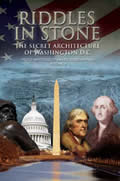Other
Kouri
Articles:
Battle at The Border: The War Few Discuss in Washington
Illegal Alien Killers, Rapists and Robbers
TSA CONTINUES TO REVISE AIRLINE PASSENGER SCREENING
Jim
Kouri, CPP
May 15, 2007
NewsWithViews.com
The Transportation Security Administration's most visible layer of commercial aviation security is the screening of airline passengers at airport checkpoints, where travelers and their carry-on items are screened for explosives and other dangerous items by transportation security officers.
Between April 2005 and December 2005, proposed modifications to passenger checkpoint screening standard operating procedures (SOP) were made for a variety of reasons, and while a majority of the proposed modifications -- 48 of 92 -- were ultimately implemented at airports, TSA's methods for evaluating and documenting them could be improved.
SOP modifications were proposed based on the professional judgment of TSA senior-level officials and program-level staff. TSA considered the daily experiences of airport staff, complaints and concerns raised by the traveling public, and analysis of risks to the aviation system when proposing SOP modifications.
TSA also made efforts to balance the impact on security, efficiency, and customer service when deciding which proposed modifications to implement, as in the case of the SOP changes made in response to the alleged August 2006 liquid explosives terrorist plot. In some cases, TSA tested proposed modifications at selected airports to help determine whether the changes would achieve their intended purpose.
However, TSA's data collection and analyses could be improved to help TSA determine whether proposed procedures that are operationally tested would achieve their intended purpose.
For example, TSA officials decided to allow passengers to carry small scissors and tools onto aircraft based on their review of threat information, which indicated that these items do not pose a high risk to the aviation system. However, TSA did not conduct the necessary analysis of data it collected to assess whether this screening change would free up security officers to focus on screening for high-risk threats, as intended.
TSA officials acknowledged the importance of evaluating whether proposed screening procedures would achieve their intended purpose, but cited difficulties in doing so, including time pressures to implement needed security measures quickly. Finally, TSA's documentation on proposed modifications to screening procedures was not complete.
TSA documented the basis -- that is, the information, experience, or event that encouraged TSA officials to propose the modifications -- for 72 of the 92 proposed modifications. In addition, TSA documented the reasoning behind its decisions for half (26 of 44) of the proposed modifications that were not implemented.
Without more complete documentation, TSA may not be able to justify key modifications to passenger screening procedures to Congress and the traveling public. TSA monitors TSO compliance with passenger checkpoint screening procedures through its performance accountability and standards system and through covert testing.
Compliance assessments include quarterly observations of TSOs' ability to perform particular screening functions in the operating environment, quarterly quizzes to assess TSOs' knowledge of procedures, and an annual knowledge and skills assessment.
|
Subscribe to the NewsWithViews Daily News Alerts! |
TSA uses covert tests to evaluate, in part, the extent to which TSOs' noncompliance with procedures affects their ability to detect simulated threat items hidden in accessible property or concealed on a person. TSA airport officials have experienced resource challenges in implementing these compliance monitoring methods. TSA headquarters officials stated that they are taking steps to address these challenges.
Sources:
Transportation Security Administration, Government Accounting Office,
National Security Institute, National Association of Chiefs of Police
� 2007 Jim Kouri- All
Rights Reserved
Jim Kouri, CPP is currently fifth vice-president of the National Association of Chiefs of Police. He's former chief at a New York City housing project in Washington Heights nicknamed "Crack City" by reporters covering the drug war in the 1980s. He's also served on the National Drug Task Force and trained police and security officers throughout the country.
He writes for many police and crime magazines including Chief of Police, Police Times, The Narc Officer, Campus Law Enforcement Journal, and others. He's appeared as on-air commentator for over 100 TV and radio news and talk shows including Oprah, McLaughlin Report, CNN Headline News, MTV, Fox News, etc. His book Assume The Position is available at Amazon.Com, Booksamillion.com, and can be ordered at local bookstores.
E-Mail: COPmagazine@aol.com
Website: http://jimkouri.us/
Without more complete documentation, TSA may not be able to justify key modifications to passenger screening procedures to Congress and the traveling public.













